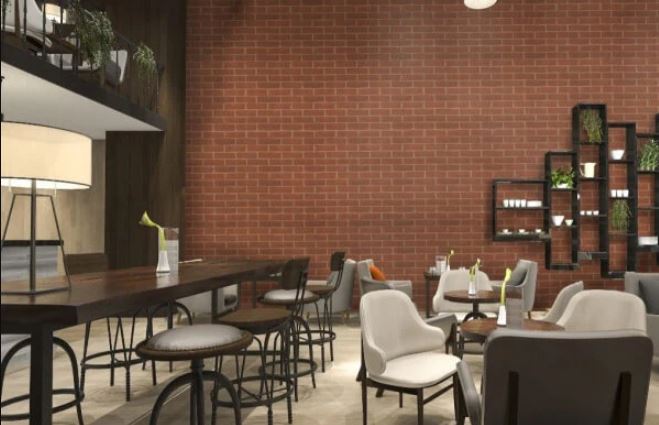Bricks, as a fundamental element in construction, play a crucial role in determining the structural integrity and aesthetic appeal of buildings.
In the UK, there are lots of types of brick, but the standard brick size of 215 x 102.5 x 65mm has become a benchmark in the industry.
- Versatility of Clay: Clay's adaptability allows for a wide range of brick dimensions, catering to diverse architectural needs. You can shop our range of ET Clay bricks here.
-
Design Implications: The chosen brick size can substantially impact the aesthetic and structural design of a building.
Useful Brick Size Table Guide
| Brick Type | Common Dimensions (L x W x H) | Common Uses | Notable Features |
|---|---|---|---|
| Standard UK Brick | 215 x 102.5 x 65 mm | General construction | Most commonly used in UK construction |
| Roman Brick (Wienerberger) | Varies, often over 500mm in length | Contemporary architecture | Longer, thinner profile for modern designs |
| Megaline Brick (Wienerberger) | Varies, often significantly larger than standard | Feature walls, creative designs | Larger format for bold architectural statements |
| Modular Brick | 194 x 92 x 57 mm | Residential construction, modular designs | Slightly smaller than the standard, versatile |
| Queen Size Brick | 248 x 123 x 71 mm | Larger residential projects | Larger face size reduces the number of bricks needed |
| Engineer Brick | 203 x 102 x 65 mm | Structural and civil engineering projects | Denser and stronger for structural support |
| Norman Brick | 290 x 65 x 100 mm | Commercial buildings, spacious designs | Longer than standard, offers a unique visual effect |
| Utility Brick | 194 x 92 x 71 mm | Multi-purpose construction | Similar to modular but slightly thicker for extra strength |
This table provides a quick comparison of different brick types, highlighting their dimensions, common uses, and notable features. It can serve as a handy reference for you to understand the variety of bricks available and their respective applications in construction. Remember, we can also supply Ibstock Bricks if you need these.
A Brief History of Brick Sizes in the UK
The dimensions of bricks in the UK have evolved over time, influenced by various historical and industrial factors. This evolution reflects in the diverse brick sizes seen across different regions and periods.
- 1784 Brick Tax: The introduction of a brick tax led to the production of larger bricks, as the tax was levied per brick.
- Shift to Machine-Made Bricks: With industrial advancement, the transition to machine-made bricks resulted in consistent and larger brick sizes.
- Regional Variations: The Midlands and the North, in particular, witnessed a notable shift towards larger brick sizes, a trend still observable today.
🔆 Key Takeaway: The history of brick sizes in the UK is a fascinating journey that mirrors the country's industrial and economic changes. Understanding this history provides valuable insights into regional architectural styles and construction practices.
Modern Trends in Brick Dimensions
Contemporary architecture in the UK is witnessing a trend towards non-standard brick dimensions, reflecting a shift in aesthetic preferences and design innovations, and the way bricks are made.
Brands like Wienerberger are at the forefront of this trend, introducing novel brick formats that challenge traditional norms.
- Non-Standard Brick Dimensions: There's a growing interest in unique brick sizes, like those with lengths exceeding 500mm and heights below 50mm.
- Roman and Megaline Bricks by Wienerberger: These brick types represent the modern shift towards longer and thinner brick formats.
- Architectural Innovation: Modern architects and designers are increasingly using these non-standard sizes to create standout contemporary projects.
🔆 Key Takeaway: The current trend towards non-standard brick dimensions opens up new possibilities in architectural design, allowing for innovative and distinct construction projects that challenge traditional norms.
The Importance of Getting Your Brick Dimensions Correct
The dimensions of a brick are more than just measurements; they are vital components that shape the overall design and functionality of a building. From the aesthetic appeal to the practicality of construction, the choice of brick size can significantly influence the outcome of a project:
Design and Aesthetic Impact
When it comes to the visual impact of a building, the size of the bricks used can play a surprisingly significant role. Each brick size offers a unique visual effect, influencing the building's overall appearance and character. Here's how different sizes impact design:
- Scale and Proportion: Larger bricks can make a building appear more robust and grand, while smaller bricks tend to give a more detailed, delicate look.
- Texture and Pattern: The size of bricks affects the texture and pattern of the walls. Smaller bricks can create intricate patterns, while larger bricks offer a smoother, more uniform appearance.
- Color Perception: The size of bricks can also affect how their color is perceived. Larger bricks provide a more continuous color field, which can make subtle colour variations less noticeable.
Practical Considerations
The practical aspects of using different brick sizes are as crucial as their aesthetic implications. The ease of laying bricks, the time taken for construction, and the need for cutting bricks to fit specific spaces are all size-dependent factors.
- Ease of Laying: Larger bricks cover more area with fewer units, potentially speeding up the construction process. However, they might be heavier and more cumbersome to handle.
- Cutting Requirements: Smaller bricks may require less cutting and waste, especially in areas with complex designs or fittings.
- Mortar Usage: The size of bricks influences the amount of mortar required. Smaller bricks mean more joints and, therefore, more mortar.
Setting Out of Brickwork
The planning and setting out of brickwork is a critical stage in construction, where the size of bricks and mortar joints come into play. This stage determines not only the aesthetics but also the structural integrity of the building.
- Structural Stability: The size of the bricks influences the strength and stability of the walls. Properly sized bricks and mortar joints ensure better load distribution and structural integrity.
- Aesthetic Consistency: Consistent brick sizes lead to a uniform and aesthetically pleasing look. Variations can be used intentionally for design effects but require careful planning.
- Alignment with Building Elements: The size of bricks needs to be coordinated with the dimensions of other building elements like windows, doors, and corners for a seamless appearance
Planning for Different Brick Sizes
Window and Door Openings
Incorporating various brick sizes into the design of window and door openings requires precise planning. The alignment of these openings with the brick layout is crucial for both aesthetic and structural integrity. Here's how brick size affects these elements:
- Sizing and Alignment: The brick size must be chosen to align correctly with the dimensions of windows and doors. Incorrect sizing can lead to excessive cutting or awkward gaps.
- Visual Symmetry: The size of bricks around openings impacts the visual balance. Consistent brick sizes lead to a harmonious appearance, enhancing the building's overall aesthetic.
- Structural Support: The bricks around openings provide essential support. Larger bricks can offer greater structural integrity, while smaller bricks might require additional lintels or support structures.
Brick Piers and Other Structural Elements
Brick piers and other structural elements demand careful consideration when varying brick sizes are used. Different sizes can significantly impact the dimensions, stability, and aesthetic of these structural components.
- Stability and Load Distribution: The size of bricks in piers affects their load-bearing capacity. Larger bricks may provide greater stability, while smaller bricks might require closer spacing or additional reinforcement.
- Dimensional Accuracy: Accuracy in dimensions is vital for brick piers and structural elements. Variations in brick size need to be compensated for to maintain uniformity and strength.
- Aesthetic Integration: The brick size in structural elements should complement the overall design of the building. Consistency or intentional variation can create a unique architectural feature.
Custom Designs
Customising brick sizes for specific parts of a project opens up a realm of creative possibilities.
Tailoring brick dimensions allows architects and builders to achieve distinctive designs and personalise the architecture to fit specific requirements or aesthetics.
- Unique Architectural Features: Custom brick sizes can be used to create unique features like curved walls, intricate patterns, or striking textural contrasts.
- Adaptation to Site Constraints: In projects with specific site constraints, custom brick sizes can offer solutions that standard sizes cannot, such as fitting into irregular spaces or matching existing structures.
- Personalized Aesthetic Appeal: The ability to customize brick sizes means architects and designers can create a signature look, setting a building apart from its surroundings and reflecting the vision of the project.
Conclusion
In conclusion, the significance of brick sizes and dimensions in the realm of construction cannot be overstated. From influencing the aesthetic appearance of buildings to impacting the practical aspects of construction, the choice of brick size is a pivotal decision in any architectural project. It is crucial for architects, builders, and designers to thoroughly understand and consider these factors for successful project outcomes.

